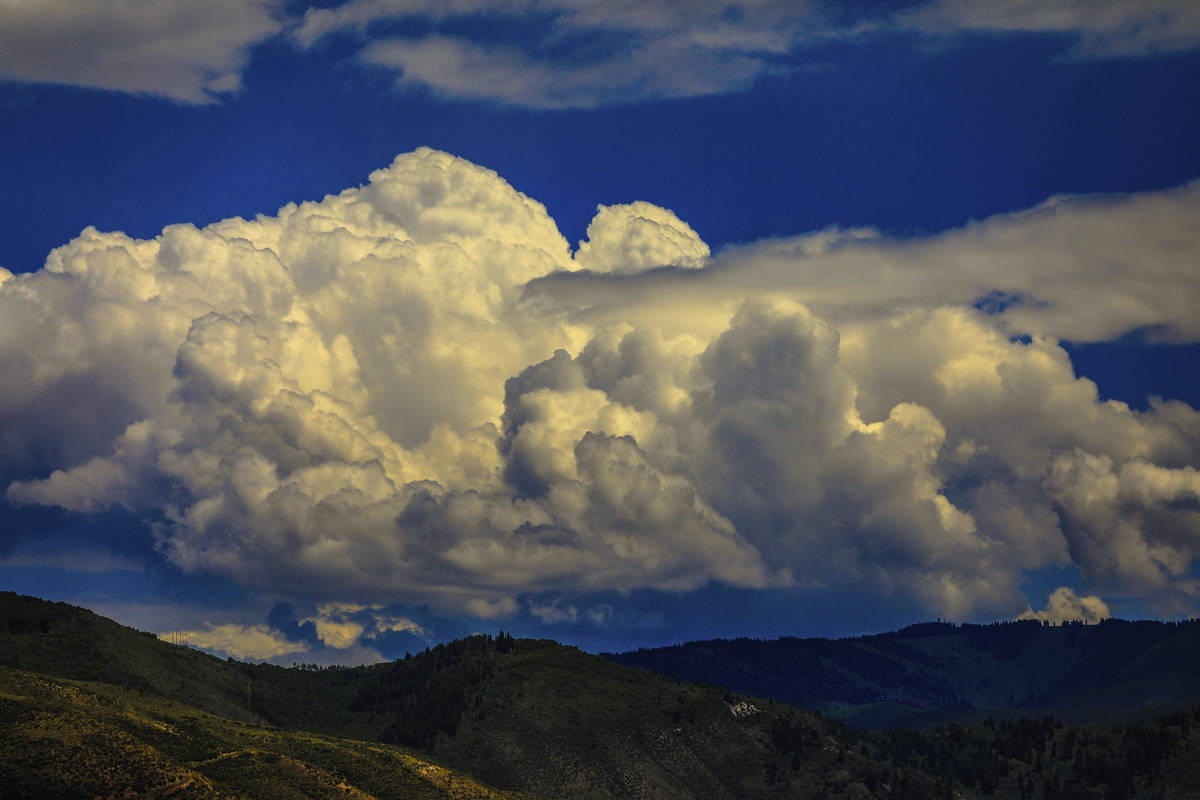Lightning strikes can be avoided if you obey warning signs

The monsoon season in Southern Nevada generally begins about mid-June and runs through the end of September. With it comes the chance of quick-moving thunderstorms that often bring high winds, heavy rain and lightning. Though the monsoon has been mild in recent years, there is always the chance that a major storm will interrupt your outdoor adventure.
Luckily, in today’s world of technological marvels, it is easy to find up-to-date weather information, and the forecasts are generally quite accurate. One of the many weather-related apps available for a cellphone is called Windy. This app provides wind forecasts days in advance and by the hour. Settings allow the user to determine how the information is presented and what is included.
There really is no reason to be blindsided by a storm most of the time. All it takes is investing a few minutes in checking the weather report for your destination before leaving home and then throughout your trip. If you are out of technology range, keep an eye on your surroundings. Be aware of simple changes in the environment, such as darkening cloud formations, a sudden drop in temperature, an increase in wind speed or change in wind direction, flashes on the horizon and static on AM radio stations.
While we tend to focus on the winds and heavy rains associated with these storms, often overlooked is the threat of lightning. According to a February 2020 report by the National Lightning Safety Council (NLSC), 418 people were killed by lightning in the United States from 2006 through 2019. Nearly two-thirds of those deaths involved people enjoying outdoor leisure activities. Water-related activities topped the list.
This makes sense given that more than 70 percent of lightning fatalities occur in June, July or August, the three months when outdoor activity is at its highest and people head to water. Fishing accounted for 44 percent of all water-related lightning fatalities, boating 20 percent. Fishing and boating generally go together, though not all fishing-related lightning strikes occur on boats.
Any guesses as to who is the typical victim of a lightning strike? (Drumroll, please.) A whopping 79 percent of victims are male with the majority between ages 20 and 49.
“Possible explanations for this finding are that males are unaware of all the dangers associated with lightning, are more likely to be in vulnerable situations, are unwilling to be inconvenienced by the threat of lightning, are in situations that make it difficult to get to a safe place in a timely manner, don’t react quickly to the lightning threat, or any combination of these explanations. In short, because of their behavior, males are at a higher risk of being struck and, consequently, are struck and killed by lightning more often than females,” the report notes.
In other words, we men are just a little more stubborn than our female counterparts when it comes to deciding that it is time for a change of venue or activity.
One of the reasons anglers and boaters are susceptible to lightning strikes is because they are near to or on the open water. When you are in a boat, or even on the shoreline, you become a high point on the water. Then add the length of that graphite fishing rod you have in your hand and you make an easy target for a lightning strike.
If you have not seen them yet, do an online search for images of a fishing rod struck by lightning. They will make a believer out of you.
What are the odds of being struck by lightning? The NLSC website says, “Your odds depend on your behavior when thunderstorms are in the area. If you take the lightning threat seriously and always get inside before lightning becomes a threat, your personal odds of being struck are near zero. However, if you ignore the lightning threat or take chances when thunderstorms are in the area, your odds of being struck are much higher.
“Lightning not only affects the person that is struck, but also the person’s family and relatives. Lightning injuries can be lifelong, devastating and very costly.”
A simple change of venue when conditions warrant it seems to be the better part of valor.
Freelance writer Doug Nielsen is a conservation educator for the Nevada Department of Wildlife. His “In the Outdoors” column, published Thursday, is not affiliated with or endorsed by the NDOW. Any opinions he states in his column are his own. Find him on Facebook at @dougwritesoutdoors. He can be reached at intheoutdoorslv@gmail.com